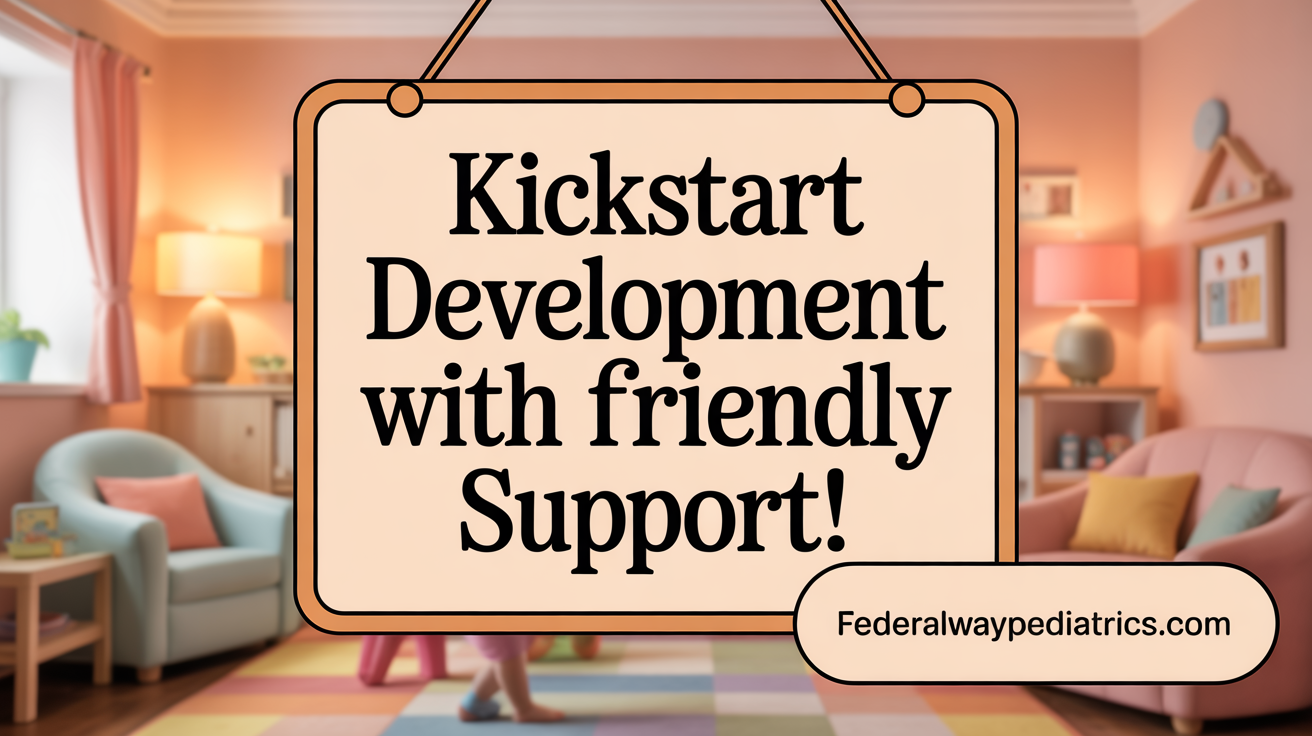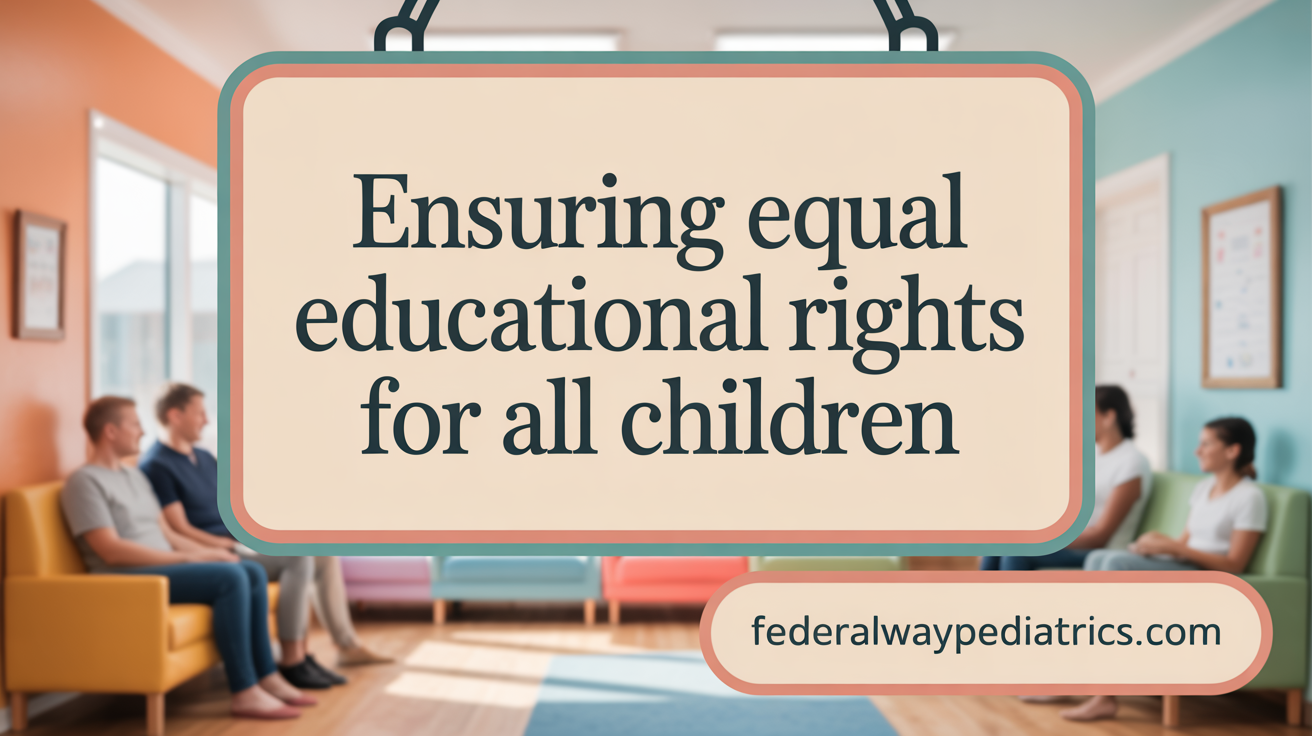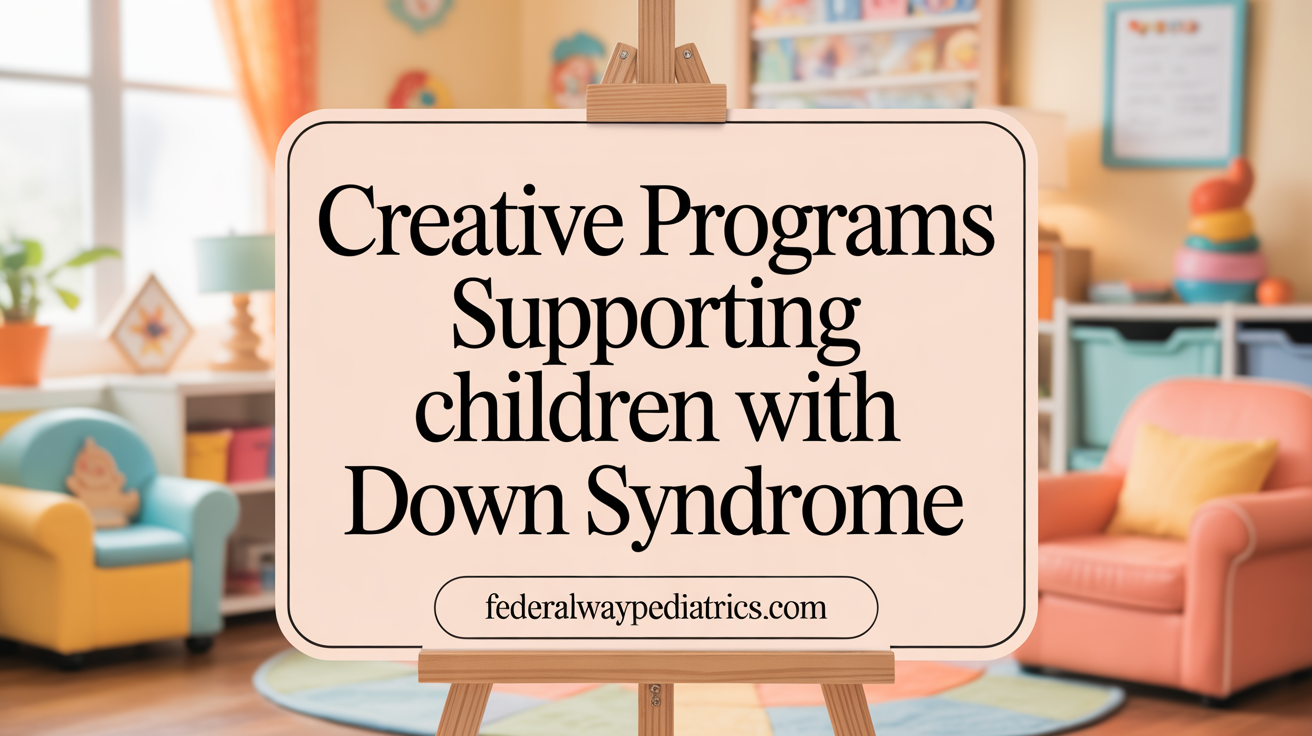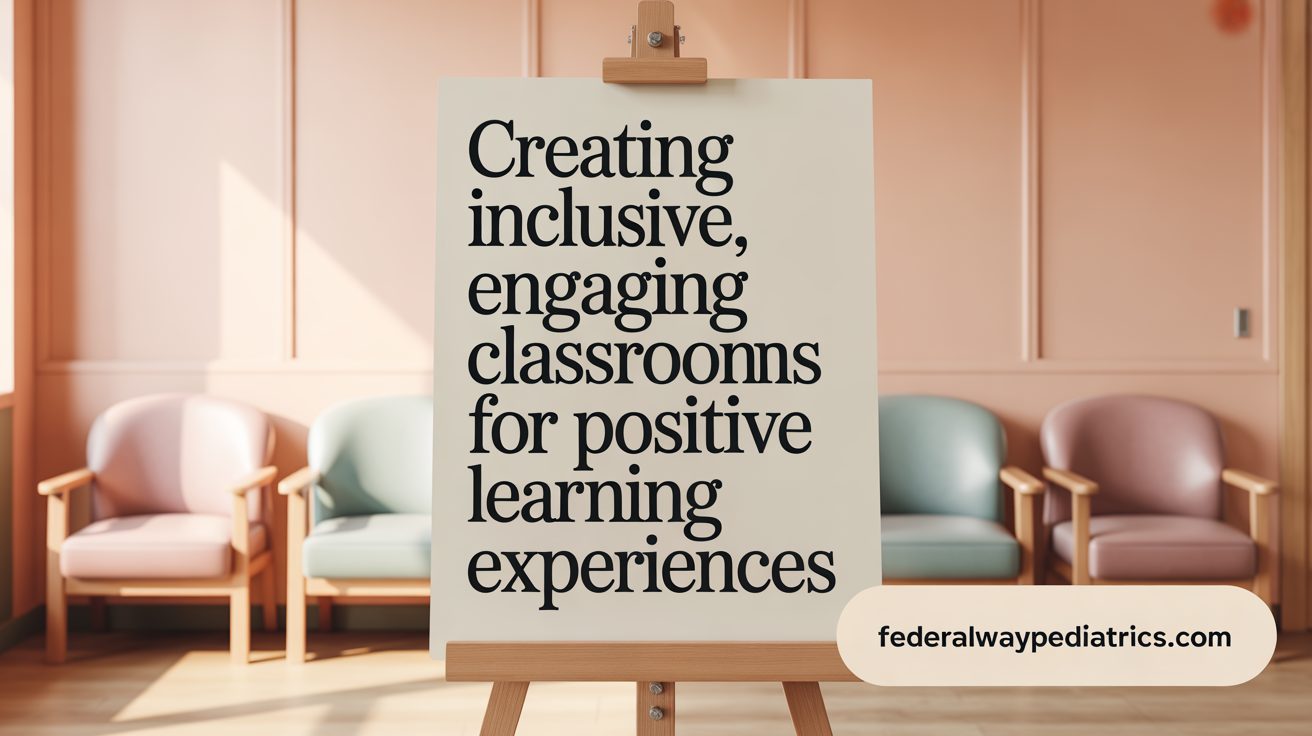Building Foundations for Lifelong Learning and Inclusion
Education is a fundamental right for every child, including those with Down syndrome. Recognizing the unique developmental profiles and educational needs of children with Down syndrome is critical to creating equitable, supportive learning environments where they can thrive. This article explores comprehensive educational strategies, resources, and support services that enable their academic success and social inclusion from early childhood through adulthood.
Early Intervention Services: Laying the Groundwork for Development

Why is early intervention important?
Early intervention is crucial for children with Down syndrome because it helps address developmental delays at the earliest possible stage. Starting support early maximizes the child's potential for learning, communication, motor skills, and social interaction. It also empowers families by providing them with strategies and resources to support their child's growth.
What are common early intervention services for children with Down syndrome?
Common early intervention services include physical therapy to support gross motor skills such as crawling and standing, speech and language therapy to boost communication abilities, and occupational therapy to improve fine motor skills and daily living activities like dressing and feeding.
These services usually begin shortly after birth and continue through preschool. Other supports involve structured play activities, social skills development, behavioral strategies to manage challenging behaviors, and assistive technologies like communication devices. These interventions are tailored to each child's strengths and needs.
What is the role of interdisciplinary teams?
A team of professionals from various fields collaborates closely to create a comprehensive support plan. This interdisciplinary team often includes pediatricians, speech therapists, physical and occupational therapists, psychologists, and educators.
Parents are integral to this team, providing insights about the child's behavior and progress at home. The team works together to monitor development, set goals, and adjust interventions as needed.
What are Individualized Family Service Plans?
An Individualized Family Service Plan (IFSP) is a document that lays out specific goals and supports for a child's development during early intervention. It is developed collaboratively by the family and professionals, considering the family's priorities and the child's unique profile.
The IFSP covers areas such as speech, motor skills, social-emotional development, and daily routines. It specifies what services will be provided, how often, and by whom, ensuring tailored support.
What are the main goals of early intervention?
The primary aim is to promote holistic development—cognitive, emotional, social, and physical—in children with Down syndrome. Early intervention seeks to minimize developmental delays, foster independence, and enhance family well-being. Additionally, it prepares children for successful entry into preschool and later educational settings, laying a strong foundation for lifelong learning and participation in society.
Inclusive Education: Policies, Rights, and Legislative Frameworks

Education as a civil right
Access to education is considered a fundamental civil right for all children, including those with Down syndrome. Ensuring that every child has the opportunity to learn and develop skills is essential for fostering a fair and equitable society. Inclusive education allows children with Down syndrome to participate fully in classroom activities alongside their peers, promoting social integration and personal growth.
Legislation supporting inclusive education
Various laws and international treaties underpin the rights of children with disabilities to receive appropriate education. In many countries, legislation mandates free and suitable public education for students with diverse needs, emphasizing inclusive settings wherever possible. These laws encourage schools and communities to adapt and provide necessary support, ensuring no child is left behind.
IDEA law and IEPs
In the United States, the Individuals with Disabilities Education Act (IDEA) guarantees the right to free, appropriate public education for children with disabilities, including Down syndrome. It also requires the development of an Individualized Education Program (IEP) for each student. The IEP outlines specific goals, accommodations, and support services tailored to the child's unique learning profile, promoting personalized and effective learning experiences.
Educational entitlement and instructional time
Children with Down syndrome are entitled to attend mainstream schools and are entitled to a certain amount of instructional time, which varies by grade. For example, kindergarten usually provides about 2.4 hours daily, while older students receive around 4.75 to 5.15 hours. Additional support, such as speech therapy or resource assistance, helps ensure these students meet their educational goals within the allocated time.
Advocacy and policy influence
Organizations like the NDSS and international bodies play a vital role in advocating for inclusive education laws. By influencing policy at federal, state, and local levels, they work to expand access, improve the quality of education, and promote awareness about the capabilities of children with Down syndrome. These efforts help create nurturing environments where all children can succeed academically and socially.
Specialized Educational Programs and Evidence-Based Resources

What contributions do Down Syndrome Education International and NDSS make?
Down Syndrome Education International (DSEI) and the National Down Syndrome Society (NDSS) play critical roles in advancing educational support for children with Down syndrome. DSEI focuses on global efforts to improve educational practices and outcomes by researching how development differs for these children. They develop and deliver structured programs like 'See and Learn' and 'Reading and Language Intervention (RLI)' to foster foundational skills in speech, language, reading, and numeracy.
NDSS works at the national level to support systems-level change. They develop resources, programs, and supports tailored for families, educators, and advocates. Their advocacy aims to influence policies at federal, state, and local levels to ensure children with Down syndrome have access to quality education. Together, these organizations contribute valuable research and practical tools that help children reach their potential.
What are 'See and Learn' and 'Reading and Language Intervention'?
'See and Learn' offers activities and guidance designed to support children from birth through early school years, focusing on developing critical early skills like communication, social interaction, and motor abilities. It uses visual supports and multisensory techniques to reinforce learning.
The 'Reading and Language Intervention' (RLI) targets children aged 5 to 11 years with Down syndrome, using evidence-based teaching strategies to improve literacy and language skills. It emphasizes systematic instruction, visual learning methods, and repetition to enhance speech clarity, reading ability, and language comprehension.
How is training provided for educators and families?
Both DSEI and NDSS recognize the importance of training. They offer courses, webinars, and workshops for teachers, speech therapists, parents, and other professionals. These training programs are grounded in research and focus on practical strategies for supporting children's speech, language, and learning needs.
Such professional development enhances educators' ability to implement inclusive, effective teaching practices and helps parents foster their child's development at home. By equipping all involved with evidence-based techniques, these programs aim to create supportive educational environments tailored to children with Down syndrome.
What evidence-based teaching strategies support children with Down syndrome?
Supporting children with Down syndrome requires approaches that recognize their strengths, such as visual learning and social skills, while addressing challenges like speech difficulties and short-term memory issues.
Educational strategies include:
- Using visual aids such as schedules, social stories, and pictures.
- Breaking complex tasks into smaller, manageable steps.
- Incorporating multisensory learning experiences with hands-on activities.
- Reinforcing positive behavior with praise and rewards.
- Modifying materials—e.g., enlarging fonts and simplifying language.
- Utilizing adaptive technology like speech-to-text apps.
- Promoting inclusive peer interactions and social skills development.
These strategies, backed by research, are incorporated into structured programs and training methods to improve educational outcomes for children with Down syndrome, ensuring they are given opportunities to learn and succeed.
Effective Classroom Strategies for Supporting Children with Down Syndrome

What are effective strategies to support children with Down syndrome in the classroom?
Supporting children with Down syndrome requires a variety of tailored strategies that focus on their strengths and specific learning needs. One recommended approach is to provide opportunities for students to serve as social skills role models for their peers, which fosters inclusion and promotes positive social interactions.
Another vital strategy is allowing self-pacing. Children with Down syndrome often learn at a slower pace and benefit from tasks being broken into smaller, manageable steps with repeated practice. This helps reduce frustration and boosts confidence.
Visual learning emphasizes the importance of using pictures, diagrams, and physical demonstrations in teaching. Since children with Down syndrome tend to be strong visual learners, integrating visual supports can enhance understanding and retention.
Offering individual motivation through praise, rewards, and personal encouragement encourages engagement and builds self-esteem. Creating a well-organized, supportive environment equipped with helpful tools like visual schedules, social stories, and cue cards is crucial for success.
In addition, incorporating multisensory learning experiences and active participation can improve comprehension and enjoyment of learning activities. Classroom routines should be structured and predictable, using visual supports to help children anticipate what comes next, which provides a sense of safety and stability.
Collaboration with families and specialists, such as speech and occupational therapists, plays an essential role in developing comprehensive support plans. Regular reviews and adjustments ensure that the child's evolving needs are met effectively.
In summary, these strategies—focusing on visual aids, social modeling, self-pacing, motivation, and structured routines—create an inclusive and nurturing environment that supports children with Down syndrome in reaching their full potential.
Accommodations and Assistive Technologies to Enhance Learning
What accommodations can be made for students with Down syndrome to support their learning?
Supporting students with Down syndrome requires thoughtful accommodations tailored to their unique strengths and challenges. Visual supports are particularly effective, given their strong visual learning abilities. Teachers can use visual aids such as charts, diagrams, videos with captions, and flashcards to help students understand and retain information.
Providing extra time for tasks and reducing workload expectations—such as simplifying assignments, using shorter texts, and breaking tasks into smaller steps—can reduce frustration and promote success. These students often benefit from a slower pace, allowing them to process and comprehend content thoroughly.
Assistive technologies also play a vital role in enhancing learning. Devices like tablets and specialized software such as Touch-type Read and Spell support literacy and speech development. Recording lessons enables students to revisit instructions and content at their own pace, reinforcing learning.
Establishing consistent routines, including visual schedules, helps create a predictable environment where students feel safe and understand what to expect. Social rituals and structured activities promote social skills and inclusion.
In addition to these measures, individualized supports like speech therapy, early literacy intervention, and physical accommodations for vision or hearing impairments further optimize learning opportunities. Combining these strategies fosters a classroom environment where students with Down syndrome can thrive academically and socially.
Comprehensive Support Services Beyond the Classroom
Support for individuals with Down syndrome extends far beyond classroom learning, encompassing a range of services that promote overall well-being, independence, and social inclusion.
Family and community support play a crucial role. Families, friends, and carers often assist with daily activities like cooking, cleaning, shopping, and attending appointments. Support workers and personal assistants are also available to provide additional help tailored to individual needs.
Health and therapy services are vital to address common issues such as speech, motor skills, and sensory impairments. Regular health checks, speech therapy, physiotherapy, and occupational therapy help children and adults reach their full potential and maintain good health.
Programs aimed at employment and independent living support are increasingly available. Organizations like the Down's Syndrome Association facilitate job placement, volunteer opportunities, and programs such as WorkFit that focus on employment readiness. Engagement in physical activities and sports, like DSActive, encourages health, social skills, and confidence.
Advocacy groups and resources play an important role in educations, rights, and social rights. These organizations provide crucial information, support networks, and advocacy to ensure equitable access to healthcare, education, housing, and employment.
Transition planning for adulthood is an essential aspect of support services. Starting around age 16, young adults are guided through processes that include vocational training, higher education options, and community living arrangements. The goal is to promote independence and full participation in society.
In sum, a combination of health, social, educational, and employment supports work together to create an inclusive environment where individuals with Down syndrome are supported throughout their lives. Accessing these services enriches their quality of life and helps them realize their personal aspirations.
Individualized Education Plans and Collaborative Teaching
How are IEPs developed and evaluated?
Individualized Education Plans (IEPs) are tailored educational roadmaps created for students with Down syndrome to address their unique learning needs. The process begins with assessments by educators, specialists, and families to identify strengths and challenges. Clear goals are then set, focusing on areas like speech, motor skills, and social skills. Regular evaluation ensures the IEP remains effective and adjusts to the child's development.
How do collaboration and teamwork support students?
Effective support for students with Down syndrome relies on teamwork among teachers, parents, speech therapists, occupational therapists, and other professionals. This collaborative approach promotes consistent strategies and allows for sharing insights about what works best for each child. Open communication helps align educational goals with health and social needs.
What role does research and best practices play?
Current research guides educators in implementing evidence-based practices such as visual supports, multisensory learning, and positive behavior reinforcement. Organizations like NDSS and Down Syndrome Education International provide resources, training, and success stories that inform best practices, ensuring that teaching methods are up-to-date and effective.
How are behavioral and social-emotional needs addressed?
Supporting behavior and emotional well-being involves creating a nurturing, predictable classroom environment. Using visual cues, social stories, and positive reinforcement helps children with Down syndrome manage frustration and develop social skills. Incorporating Social and Emotional Learning (SEL) programs like Positive Action encourages empathy, self-awareness, and acceptance.
Why is professional development important?
Ongoing training for educators and support staff ensures they are equipped with the latest strategies, understanding of individual learning profiles, and inclusive practices. Professional development fosters confidence in managing diverse classrooms, promoting a positive, inclusive atmosphere where all students, including those with Down syndrome, can thrive.
Promoting Lifelong Learning and Transition to Adulthood
Planning for transition by age 16
Preparing students with Down syndrome for adulthood begins early, with transition planning starting around age 16. This involves setting personalized goals for independence, employment, community participation, and health management. Family, educators, and professionals collaborate to develop a comprehensive plan that aligns with the child's strengths and interests.
Post-secondary education and training
Many individuals with Down syndrome graduate from Year 12 and pursue further education or specialized training. Opportunities include community colleges, certificate programs, and supported higher education settings. These programs focus on developing skills for employment, social engagement, and independent living.
Community integration and employment opportunities
Inclusive education supports better integration into community life and workplaces. Supported employment programs and internships help individuals with Down syndrome gain skills and confidence, leading to greater independence. Community involvement and volunteering also foster social connections and personal growth.
Lifelong learning and skills development
Learning doesn't stop after school. Adults benefit from ongoing education, including workshops, online courses, and adult education programs tailored to their needs. Developing life skills such as money management, health self-care, and social communication enhances independence and quality of life.
Use of technology for independence
Technology plays an important role in fostering independence. Devices like smartphones, apps for scheduling, communication aids, and adaptive tools help individuals manage daily tasks, stay organized, and communicate effectively. Training in technology use supports lifelong learning and community engagement.
Towards an Inclusive Future for Learners with Down Syndrome
Education, from early intervention through adulthood, is vital in empowering children with Down syndrome to reach their full potential. Inclusive educational policies, evidence-based practices, and tailored accommodations provide the foundation for academic achievement and social integration. Continued collaboration between families, educators, therapists, and advocacy organizations ensures effective support throughout the learner's journey. By embracing each child's strengths and addressing challenges comprehensively, we pave the way for meaningful inclusion, independence, and lifelong learning opportunities that honor the rights and capabilities of individuals with Down syndrome.
References
- Education Program | National Down Syndrome Society (NDSS)
- Down Syndrome Education Online
- How to Teach Students With Down Syndrome: 15 Effective Strategies
- [PDF] Supporting the Student With Down Syndrome in Your Classroom
- Classroom Learning Tools to Assist Students with Down Syndrome
- Down Syndrome - Center for Parent Information and Resources
- Recommendations for the education of Learners with Down Syndrome
